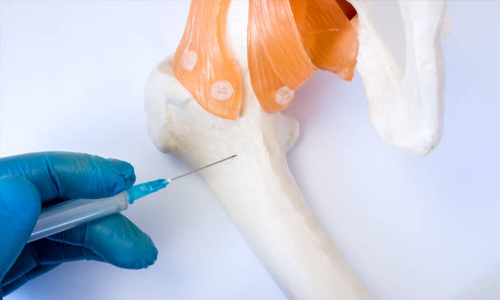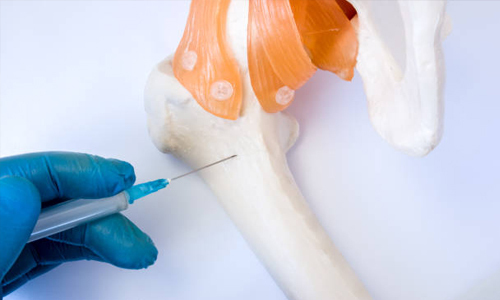Bone marrow is a spongy tissue that fills the inside space of the bones. It is the place where most of the body’s blood cells are produced and stored. A bone marrow transplant is a procedure used to infuse blood-forming stem cells into the body to replace bone marrow that is not making enough healthy blood cells. Generally, a bone marrow transplant is also known as a stem cell transplant. A person may require a bone marrow transplant if their bone marrow fails to generate enough healthy red blood cells or stops functioning completely. An allogeneic transplant uses bone marrow from a donor, whereas an autologous transplant uses cells from your own body. For those with certain tumors or other conditions, this treatment provides a unique form of therapy Bone marrow transplant is used successfully to treat diseases like lymphomas, aplastic anemia, leukemia, immune deficiency disorders, and certain solid tumor cancers.
BMT Package Costs and Availability by Country
The cost of a bone marrow transplant package starts from $23,000 which is lower than the price offered by hospitals. You get an attractive discount on these packages. However, the cost may differ depending on several factors, such as type of surgery, technology used, pre-existing condition, age of the patient, etc.
There are some countries where you can avail the best Bone Marrow Transplant Package. Those countries boast the best doctors, the latest equipment, world-class hospitals, and the latest infrastructure. Huge discounts are given on the package, helping you save a lot and enjoy excellent facilities and services.
>>Why should I purchase a Bone Marrow Transplant Package?
A Bone Marrow Transplant Package offers numerous advantages. This helps you save a lot of money as you get an attractive discount. The package offers multiple benefits, such as a complete refund on cancellation of the package, a city tour, treatment with the best transplant surgeons, free telemedicine, etc. You will also get assistance to make your journey hassle-free like accommodation, food, airport transfer, visa assistance, and much more.
>>Can we avail of any post-care surgery packages present in the market?
Yes, you can avail of post-surgery packages after undergoing a bone marrow transplant. Depending on the type of treatment received, post-operative care services, such as telerehabilitation, physical rehabilitation, virtual consultation, and review of reports can also be offered to patients. Oncea treating doctor suggests the need for post-operative care, the team at MediGence will guide you to avail the same.
>>Long-Term Outlook after a Bone Marrow Transplant Surgery
A bone marrow transplant can treat some diseases. The goal of a bone marrow transplant depends on the patient’s condition and generally includes curing or controlling your disease, improving your quality of life, and extending your life. Some people may have few side effects from a bone marrow transplant. Others might face short- and long-term side effects. People with a bone marrow transplant have more chances of surviving for more than 15 years.
Read More about- Allogeneic Bone Marrow Transplantation
>>Who is suggested for Bone Marrow Transplant?
The goal of bone marrow transplant is to treat several diseases and many types of cancer. When the doses of radiation or chemotherapy required to cure a cancer are so high that an individual’s bone marrow stem cells could be permanently destroyed or damaged by the treatment, a bone marrow transplant might be needed.
>>What are the risks associated with BMT
There is a risk of infections after BMT. An individual might have side effects from getting another person’s stem cells, including a risk of infection graft-versus-host disease. Many people also have a “graft-versus-cancer cell effect.” It is crucial that you are aware of both possible benefits and the risks before treatment starts. You need to discuss them with the treatment team as well as your family.
The myth saying donating bone marrow takes a long time (It’s your precious time and it’s never long when saving someone’s life)
The short story goes here
Hafsat Ibrahim Saleh, a 25-year-old girl from Nigeria suffered from sickle cell disease. He underwent a Bone Marrow Transplant in India. Read Full Story– About Ms. Saleh successful BMT
Diseases that are commonly treated after BMT
Diseases that can be treated after BMT are:
- Lymphomas
- Multiple myeloma
- Leukaemia
- Severe aplastic anaemia
- Some solid-tumor cancer
- Immune deficiency disorders
- Immune deficiencies
- Inborn errors of metabolism
- Myelodysplastic syndrome
- Hemoglobinopathies
- Hodgkin’s lymphoma
- Plasma cell disorder
- POEMS syndrome
Conditions for matching Donor & Recipient
A set of genes known as the HLA system is crucial to the immune system. The major histocompatibility complex is made up of the proteins that these genes collectively produce (MHC). Markers, or HLA proteins, assist the immune system in determining which cells are normal and which are not. HLA typing, also known as HLA matching, can be used to determine whether or not a possible tissue donor and recipient are a good fit. The chance of a successful transplant increases as a result.
If a patient has several matches, the doctor will consider other factors like the donor’s gender, age, blood type and BMI.
>>What complications and side effects may happen following BMT?
Like any cancer treatment, a bone marrow transplant can cause side effects. These may be different for everyone. The risks depend on your general health, the type of transplant, and many other factors. Many side effects vanish with time, but some of them can be permanent.
The following complications may happen with a bone marrow transplant:
- Infections: Infections are likely among patients with bone marrow suppression.
- Low platelets or low red blood cells: Can cause Thrombocytopenia (or low platelets) and anaemia (or low red blood cells).
- Pain: Pain relating to mouth sores and gastrointestinal irritation may occur.
- Fluid overload: It is a complication that can cause liver damage, high blood pressure and pneumonia.
- Respiratory distress: Respiratory status might be compromised during transplant.
- Organ damage: The heart and liver may be damaged during transplantation.
- Graft failure: Failure of the graft is a common complication.
- Graft-versus-host disease: It can be a serious complication.
>>When should one go for BMT Surgery?
When your body is unable to produce enough stem cells or when bone marrow cells are no longer viable, you may need to have a stem cell transplant. Your blood cells and bone marrow may be unhealthy. To replace the damaged bone marrow or stem cells in such a situation, an individual needs healthy stem cells. A bone marrow transplant may be necessary if the radiation or chemotherapy dose needed to treat a particular malignancy is so high that the patient’s bone marrow stem cells would be irreversibly damaged or killed by the treatment. If a condition has severely damaged the bone marrow, bone marrow transplants may also be necessary.
Conditions Required for Bone Marrow Transplant
An individual who meets certain criteria might be considered for a bone marrow transplant. The doctor will explain your risk of complications of bone marrow transplant. Identifying as well as evaluating patients who could benefit from BMT involves several factors, including prior therapies, age, overall health, disease, and disease stage. A healthy person between the ages of 18 to 60 years of age could be an ideal candidate for a bone marrow transplant. To register as a blood stem cell donor safely, the maximum Body-Mass-Index limit is 40 kg/m2. Doctors also match donors to the patient based on his/her human leukocyte antigen (or HLA) tissue type.
Preparations for donor & recipient
- A series of tests are used to assess the patient’s health and the status of the condition. The tests also ensure that the patient is physically prepared for the procedure. The evaluation may take a long time.
- Typically, the catheter stays in place during the procedure. If a stem cell transplant using the patient’s cells is the plan, the patient will have blood stem cells extracted using an apheresis operation.
- A donor is required if someone is getting a transplant that uses the donor’s stem cells. Once a donor has been identified, the transplant requires the extraction of stem cells from the donor. You will begin a conditioning procedure following the pre-transplant testing, which involves the use of radiation and chemotherapy to kill cancer cells, suppress the immune system, and prepare the bone marrow for the implantation of fresh stem cells.
- Matching patients and donors is a complex process of matching close HLA types. The doctor will select donors who match on a basic level.
>>What happens in a bone marrow transplant procedure?
- The preparation for a bone marrow transplant may vary depending on the disease needing a transplant, the type of transplant, and your tolerance for some medicines.
- Generally, high doses of chemotherapy or radiation may be included in the preparations. This therapy is needed to treat the malignancy and make enough space in the bone marrow for new cells to grow. This process is called ablative due to the effect on bone marrow.
- The bone marrow produces most of the blood cells in our body. An empty marrow is required to make space for the new stem cells to grow well and form a new blood cell production system.
- After chemotherapy or radiation, the bone marrow is inserted through the venous catheter into the blood. This isn’t a surgical procedure to insert the marrow into bone but is like having a blood transfusion. These stem cells will find their way into bone marrow and start producing new healthy blood cells.
Also Read– All You Need to Know About Bone Marrow Transplant
>>Risk factors for a bone marrow transplant donor
Donors might experience bone and muscle pain or headaches, similar to the flu or a cold, for a few days before collection. This is a side effect of filgrastim injections that may disappear right after donation. Other side effects are trouble sleeping,nausea, and tiredness. Around 2.4% of people who donate bone marrow may experience a serious complication, according to the National Marrow Donor Program. Few bone marrow donors might suffer long-term complications.
>>How is a bone marrow transplant different from a Stem Cell Transplant?
A stem cell transplant generally uses stem cells from a donor’s bloodstream. This is called peripheral blood stem cell transplant. Whereas, in bone marrow transplant, stem cells are used from either your bone marrow or the donor’s bone marrow. Moreover, a stem cell transplant is the most common type of transplant. The only real distinction between a stem cell transplant and a bone marrow transplant is in the method of collecting stem cells.
Time Taken for the Bone Marrow Transplant procedure
The procedure generally takes 1-2 hours. The procedure is carried out a day or two after conditioning is finished. The stem cells are passed slowly into the body through the central line. This process may take about a couple of hours. The transplant will not be painful and you will be awake throughout. You may go home the same day or the next morning. One may feel sore as well as weak for a few days. They can also take cells directly from blood through a procedure called apheresis.
>>Is there any chance of failure in BMT Surgery?
Graft failure is more common when the donor and patient aren’t matched properly and when the patient gets stem cells that have the T-cells removed. Graft failure may also happen because of recurrent disease, infection, or in case the stem cell count of donated marrow is insufficient to cause engraftment. A common treatment for graft failure is another transplant. A second transplant might use cells from a different donor or the same donor. In case you underwent a cord blood transplant, you can’t get more cells from the same cord blood unit.
>>How successful is a bone marrow transplant today’s date?
The success rate of bone marrow transplants is about 60 to 85%. Patients who have an allogeneic transplant for non-malignant conditions have a success rate of 70-90% with related matches and 36-65% with unrelated donors. Numerous factors determine the success rate of BMT, such as age of the patient, match with the donor, medical condition of the patient, type of marrow, post-surgical complications, etc.
>>Does Health Insurance Cover Bone Marrow Transplant?
Coverage of bone marrow transplant for health insurance depends upon the country an insurance belongs to. Many health insurance providers in India provide coverage for bone marrow transplants under critical disease health insurance plans. However, most health insurance plans generally do not offer coverage for stem-cell transplants except for bone marrow surgery.
>>What kind of follow-up care is required during recovery?
After undergoing a bone or marrow transplant, the immune system is weak and the patient is prone to infection. You need to pay attention to complete hygiene. After the last session, your doctor will check the blood every day to find out how well the transplant has been. They will test whether new cells are beginning to grow in bone marrow. Some individuals can leave the hospital soon after the surgery, while others may need to stay for many weeks. The dedicated medical team will continue to evaluate the person’s recovery for up to one year. The long-term follow-up care is provided by a nurse practitioner who is trained in taking care of transplant survivors. She will focus on preventing, identifying, and controlling all side effects that may be related to your transplant.
Explore the Cost of Bone Marrow Transplant by Country
Related Reads:
Bone Marrow Transplant: Symptoms, Classification, Diagnosis & Recovery
Heart Transplant: Symptoms, Classification, Diagnosis & Recovery
Kidney Transplant: Symptoms, Classification, Diagnosis & Recovery
Liver transplant: Symptoms, Classification, Diagnosis & Recovery
Stem Cell Therapy: Symptoms, Classification, Diagnosis & Recovery



